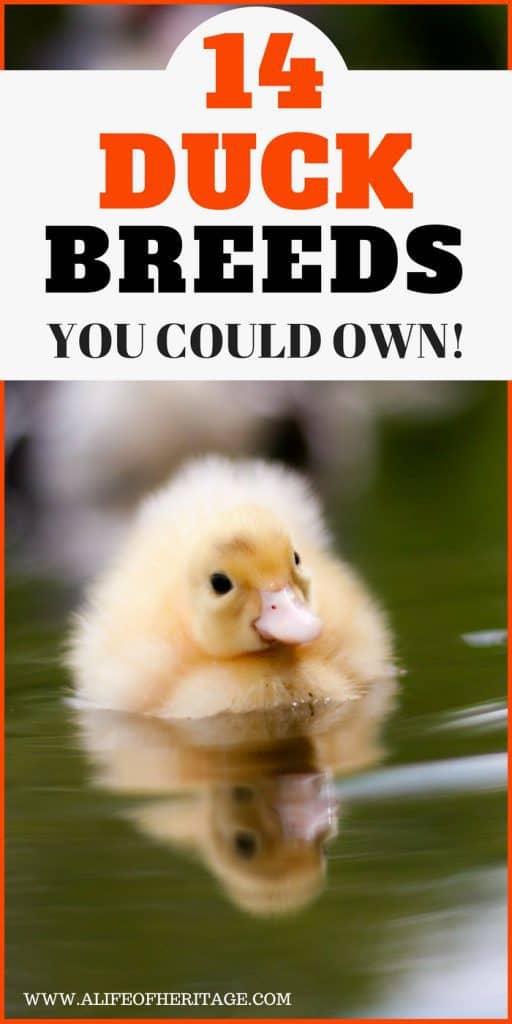
Duck Breeds YOU Could Own
At this point you fall under one of three categories:
- You’ve never owned ducks before.
- You’ve owned ducks but weren’t prepared and lovingly and sadly gave them away declaring, “I’ll get more someday when I’m ready!”
- You currently own ducks and…
- Love, love, love them!
- Love them but are annoyed by the mess they make in the chicken water…or any water they can find.
If you’ve made the decision to add ducks (or re-add ducks) to your property, there are several duck breeds to consider. It’s important to know what your end goal is when choosing a breed. Are eggs, meat, or both important?
You can find a lot of articles here on A Life of Heritage that will teach you a lot about poultry and be sure to check out DUCK DOUGH: Profitable Poultry Bundle–It’s FULL of to-do lists, checklists, record keeping sheets, and resource pages that will keep your flock healthy and YOU organized!
These questions answered:
- Duck breeds with pictures
- What duck breeds are great for eggs
- Duck breeds that make great meat birds
- Duck breeds for pets
- Duck breeds chart
- Information about mixing duck breeds
At a glance, here are 14 breeds to choose from.
This is your starting point to success with ducks. Choosing the right breed will be a key factor in your success and satisfaction in owning ducks.
Let’s begin!
 Pekin Ducks
Pekin Ducks
- White with yellow feet and bill
- Docile, friendly, calm, and hardy
- 150-200 white eggs per year
- Not broody
- Heavy bird: 8-9 pounds
- Ideal for eggs and meat
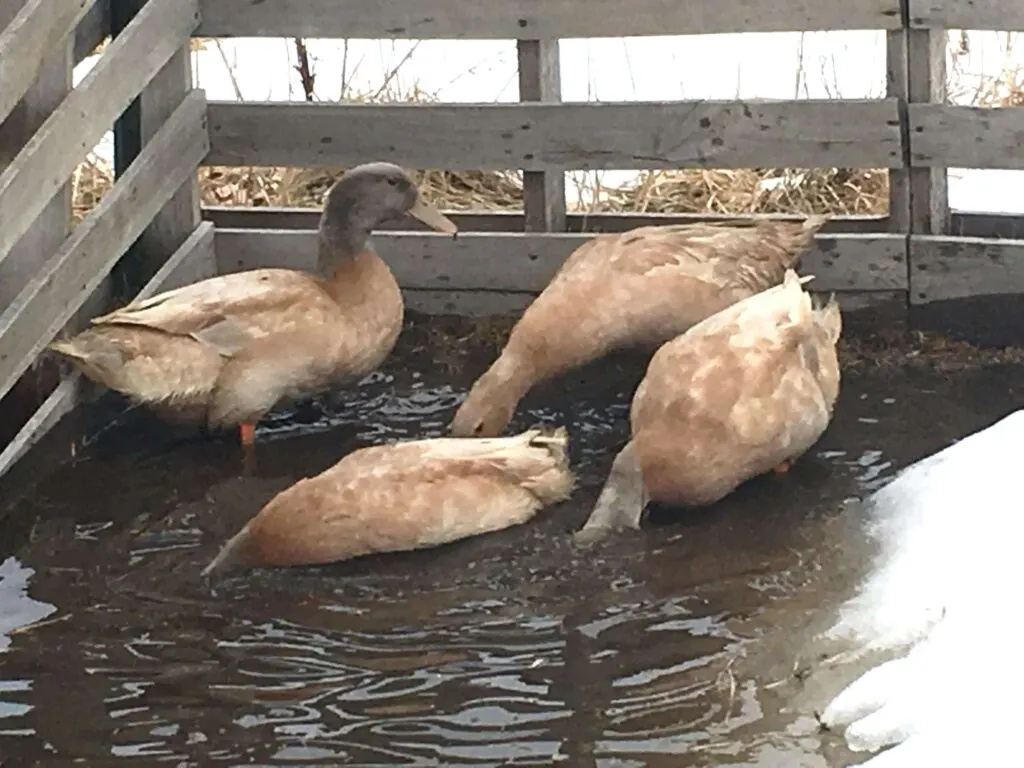 Buff Orpington Ducks
Buff Orpington Ducks
- Both the duck and drake have buff plumage, orange-yellow shanks and feet, and brown eyes. The drake’s bill is yellow while the duck’s bill is brown-orange.
- Hardy, a generally docile, flightless, and great forager
- 150-220 white eggs per year
- Occasionally broody
- Heavy bird: 7-8 pounds
- Ideal for eggs and meat
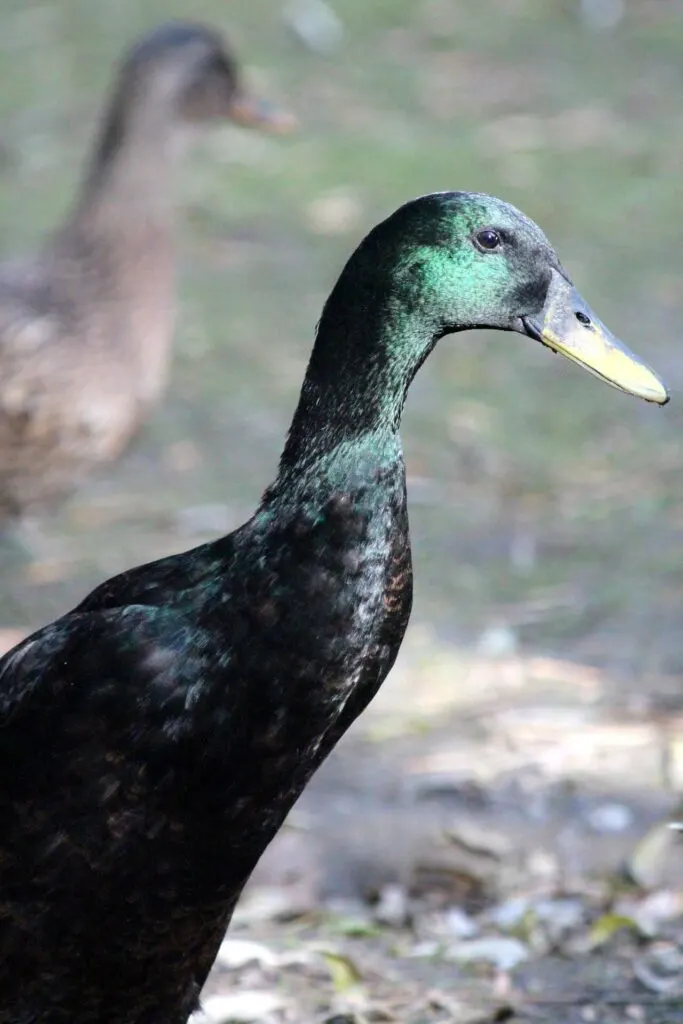 Indian Runner Ducks
Indian Runner Ducks
- They come in various colors including black, buff, fawn, white, gray, and chocolate.
- Active, and energetic but friendly and excellent foragers. They walk upright and rarely swim but love to bathe. They are non-flight birds.
- 150-200 white or greenish eggs per year
- Small bird: 3-5.5 pounds
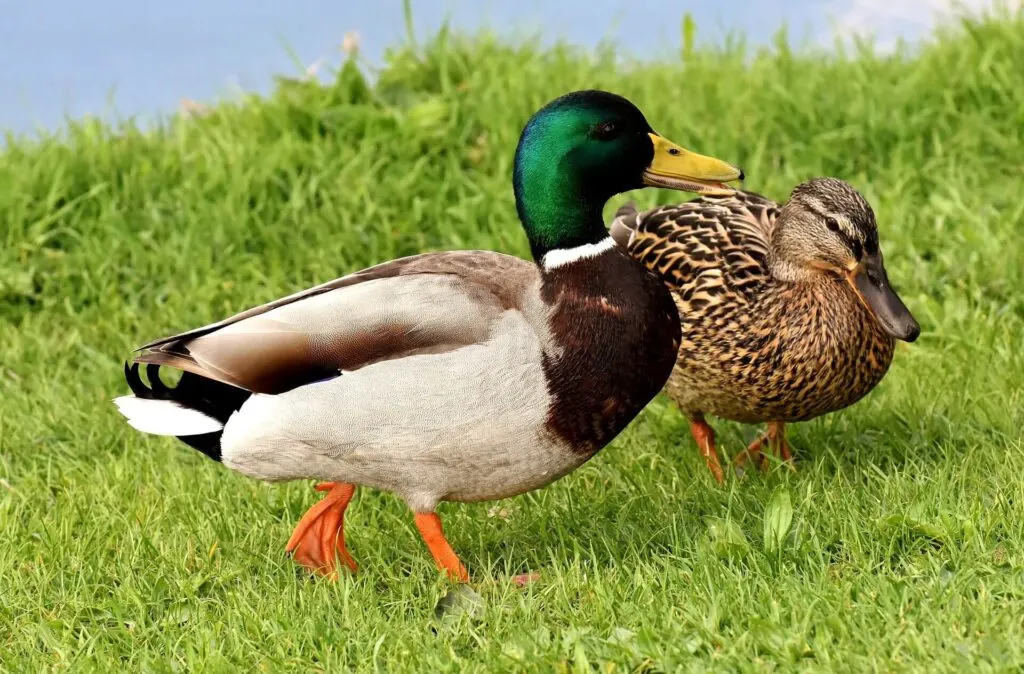 Mallard Ducks
Mallard Ducks
- The females are brown with blue wingtips, the males have a distinctive greenish head.
- High energy, “talkative”, good-natured and excellent flyers
- 60-120 greenish eggs per year
- Broody temperament
- Small bird: 2.5 pounds
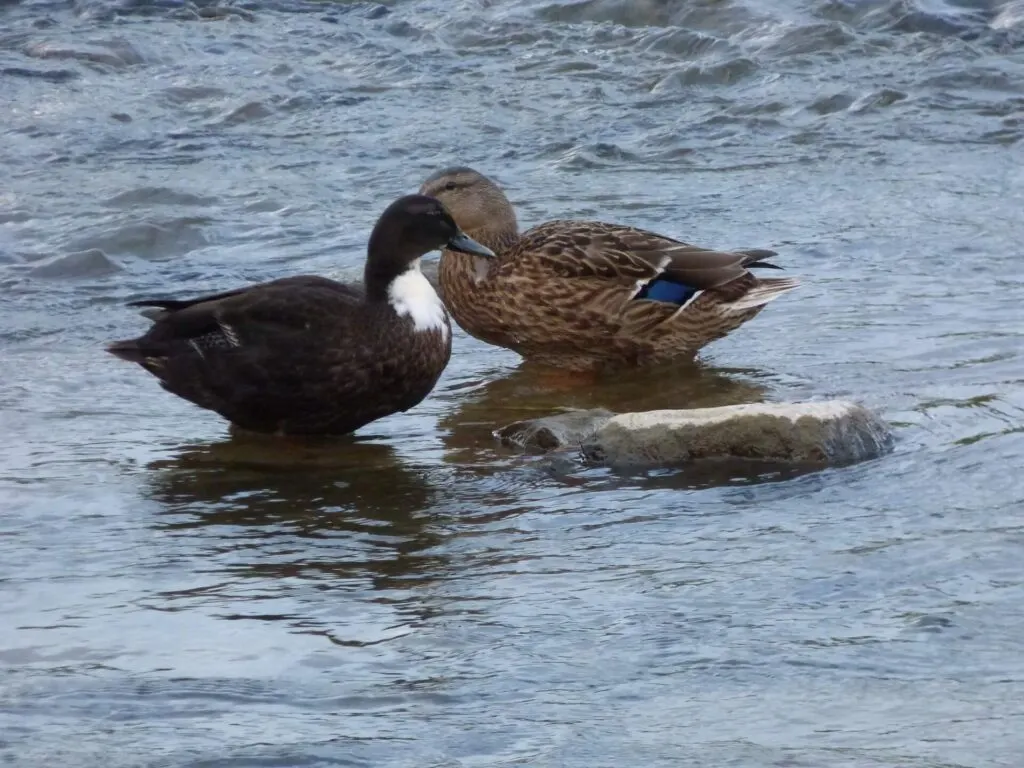 Swedish Ducks
Swedish Ducks
- Blue, black, or silver (splash) with white bibs and slate bills
- Very calm, extremely hardy, good foragers
- 120-180 white eggs per year
- Broody temperament
- Heavy bird: 5-6.5 pounds
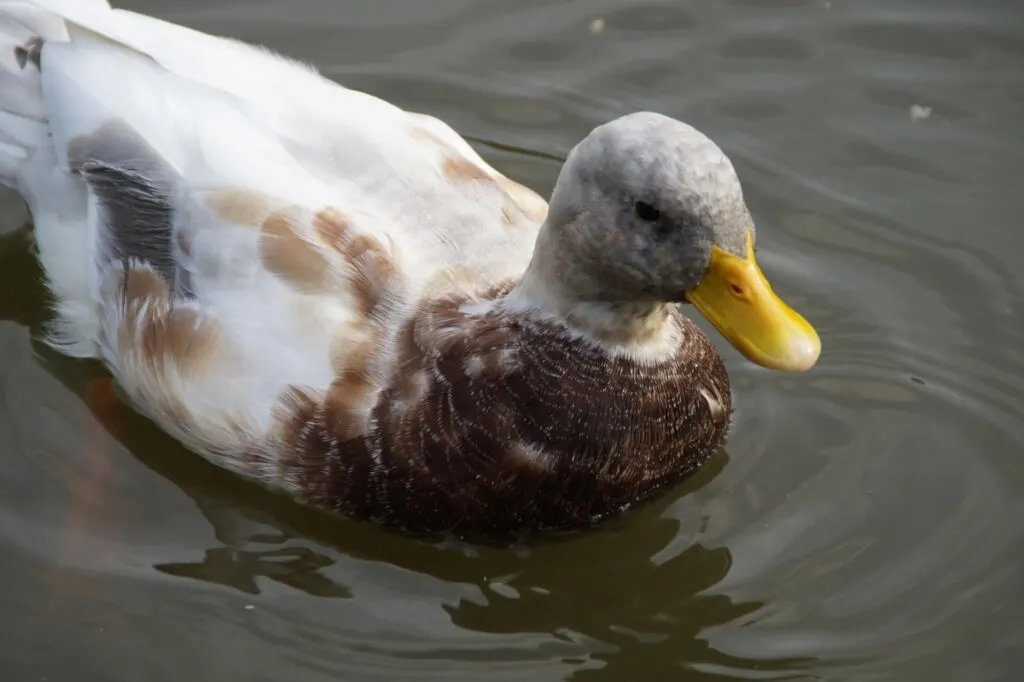 Saxony Ducks
Saxony Ducks
- Drakes: oatmeal with a burgundy chest, silvery-blue wings, and charcoal gray-blue heads with a white ring around their neck and orange bills and feet. The hens are fawn-colored with white eye stripes and orange bills and feet.
- Active, alert, energetic, and excellent foragers. A rare breed in the U.S.
- 200 white eggs per year
- Broody temperament
- Heavy bird: 7-8 pounds
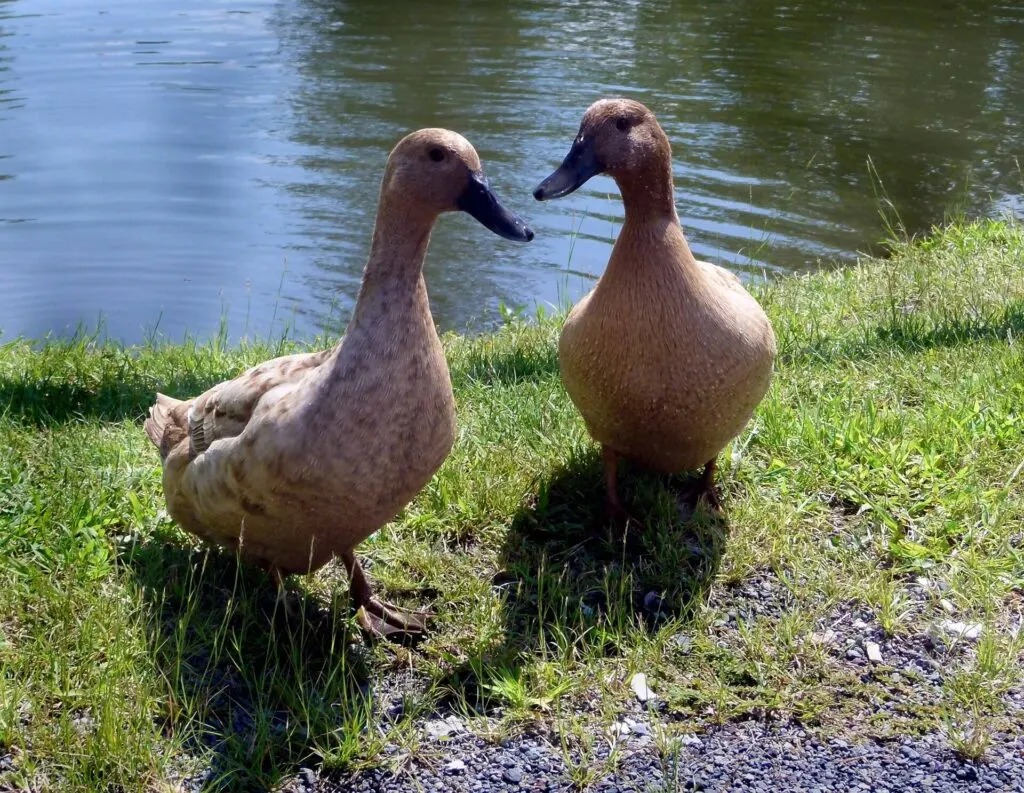 Khaki Campbell Ducks
Khaki Campbell Ducks
- Light brown with a bluish-green bill. The hens have brown feet and the drakes have orange feet and greenish heads
- Skittish but great foragers
- Up to 300 white eggs per year
- Not broody
- Light bird: 3.5-5.5 pounds
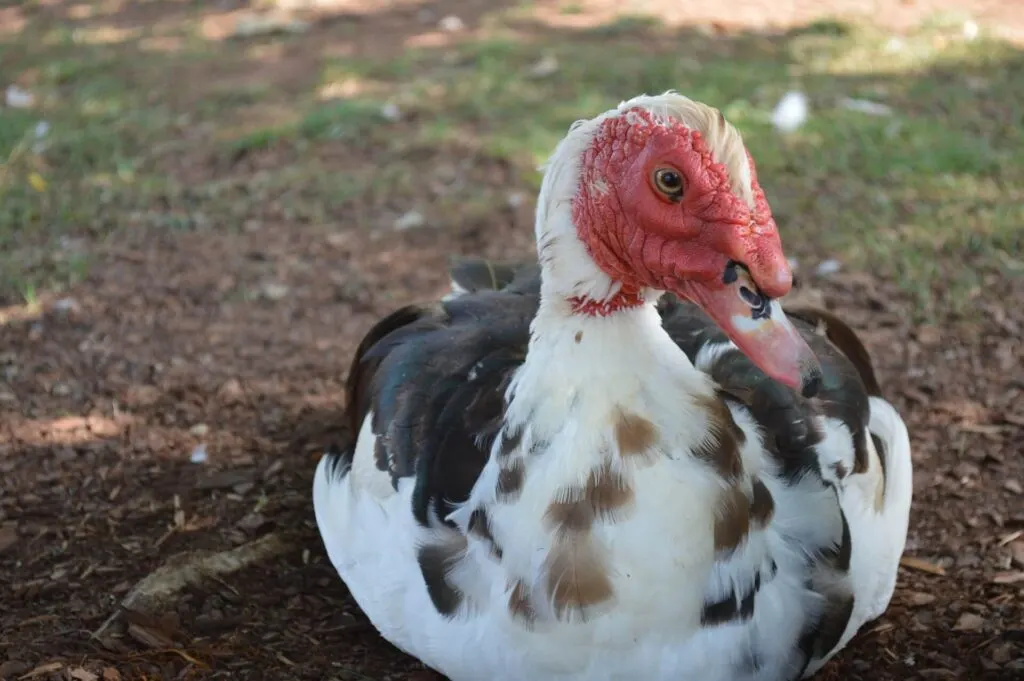 Muscovy
Muscovy
- NOT a duck (as we generally know them to be). Now that I have your attention. The Muscovy is a different species of duck. As noted below you can see the differences they exhibit.
- “They have a body like a duck; they nest, attack predators, and hiss like a goose; they roost like a chicken, and they have a plump breast like a turkey. The male Muscovy has characteristic fleshy growths around the eyes called caruncles.” ~Source
- Cream-colored Eggs
- Thrives under free-range conditions
- Leaner meat than a duck
- Heavy Bird: The male Muscovy can become very large (10 to 12 pounds); the female is smaller (5 to 6 pounds).
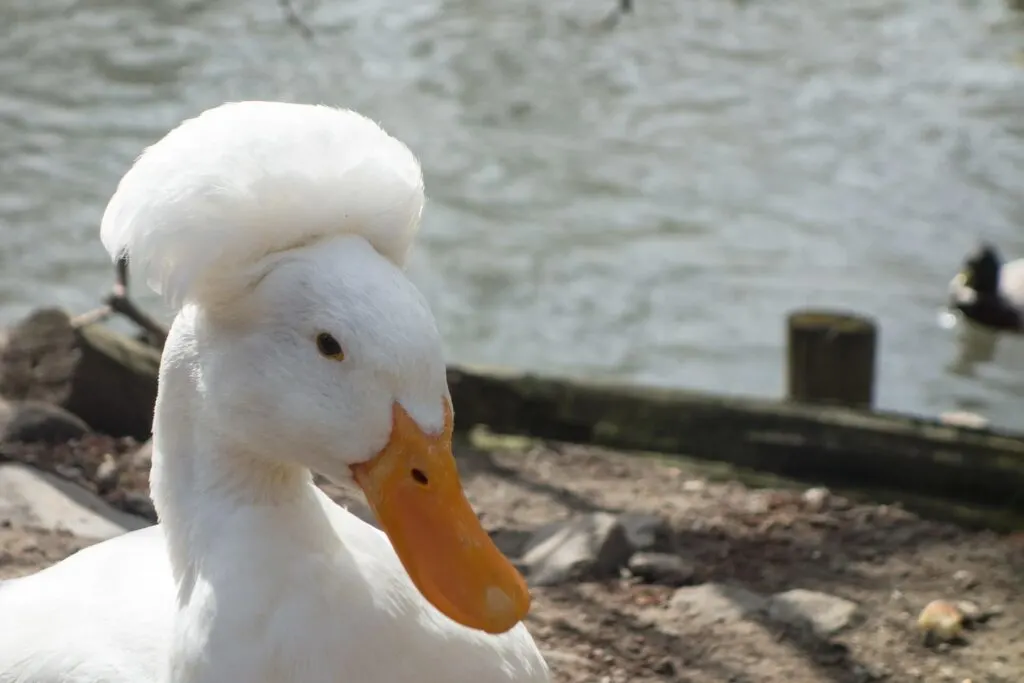 Crested Duck
Crested Duck
- White feathers with a ball of feathers on top of their head. This is also called a “crest”. This cute crest, however, is actually a genetic mutation. They have a gap in their skull that is covered by fatty tissue. This can pose problems like seizures, neurological problems, and an overly aggressive male may cause damage when breeding.
- May be a bit nervous. But can be great pets.
- Up to 200 white eggs per year
- Because of their genetic mutation, breeding a crested duck to a crested duck can be fatal for their offspring. And 1/4 of the eggs that are fertile won’t even hatch. And if they do, half of the surviving ducklings won’t develop a crest.
- Light bird: 4-6 pounds
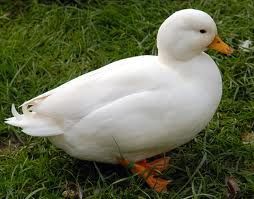 Call Duck
Call Duck
- Usually, they have white feathers but recently more colors have become available. They are also very loud and talkative.
- Very calm temperament and fun, playful attitude
- 60-100 pale green eggs per year
- May go broody
- Fun facts: Originally bred by duck hunters. Their calls and quacks attract the wild ducks to the hunting area. But since the artificial duck calls and decoys have replaced them almost entirely, they are mainly raised as pets.
- Light bird: 1.5 pounds
Be sure to check out DUCK DOUGH: Profitable Poultry Bundle–It’s FULL of to-do lists, checklists, record keeping sheets, and resource pages that will keep your flock healthy and YOU organized!
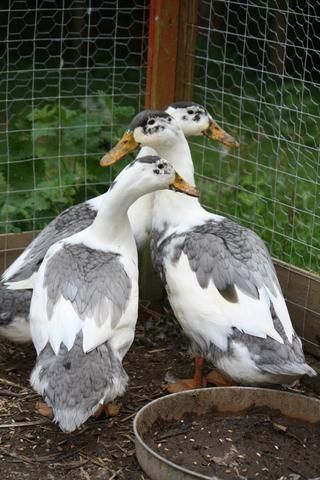 Magpie Ducks
Magpie Ducks
- Possible Colors: usually are black and white. They may also be blue and white with an orange bill.
- Calm and quiet temperament
- 200 eggs per year which can be cream, white, green, and blue
- Lighter bird: 5.5-6
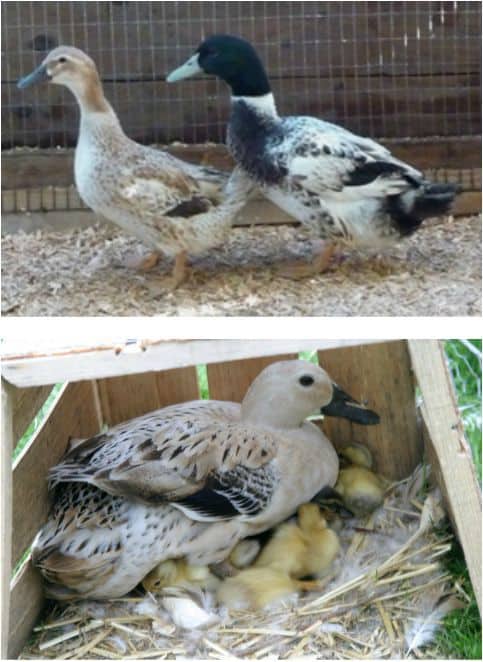 Welsh Harlequin
Welsh Harlequin
- Males resemble a male mallard with a beautiful green head, brown body, and white ring around their neck. They have an orange bill. The females have a black bill, brown and white feathers, and a blue speculum feather ban.
- Calm bird and great foragers
- 200+ eggs per year that are somewhere between a white and light blue tint.
- 90% of them can be sexed at just a few days old by the color of their bills.
- Medium bird: 4.5-5.5 pounds.
- Raised for meat and eggs.
- Critically endangered.
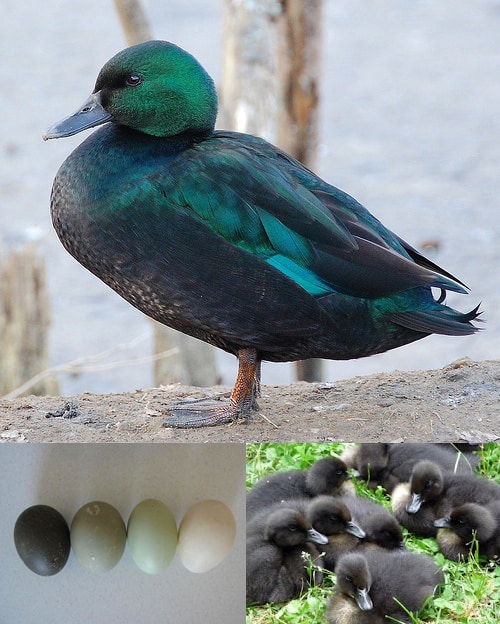
Cayuga
- Black iridescent feathers. They can look green in certain lighting. They have black bills and feet. The older birds of laying hens may have a bit of orange on their feet.
- Calm disposition
- 150+ eggs per year that have a charcoal or black/gray colored shell
- Developed in the U.S. near Cayuga Lake in New York.
- Heavy bird: 7-8 pounds but slow-growing.
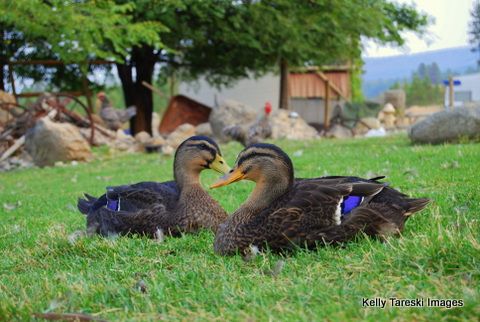 Rouen
Rouen
- Nearly identical to the Mallard but they are larger and too heavy to fly away.
- Calm disposition
- 150-200 eggs per year that are tinted blue
- Heavy bird: 6-7.9 pounds
- Raised for both meat and eggs.
Information on Mixing Duck Breeds
It is possible to raise and mix duck breeds together. But when doing this, be careful with extreme size differences. Larger drakes can hurt the smaller hens. Watch the ratio of drakes to hens or raise all hens together and there shouldn’t be any problems. For more information on raising ducks, visit this link: Raising Ducks
Duck Breeds Chart
You may use and share this chart below, but please give credit and link to A Life of Heritage.
This information gives a lot of insight into which duck breed will work best for your property and situation. Which breed catches your eye right off? Go online and study more. And learn all you can about that breed!
Be sure to check out DUCK DOUGH: Profitable Poultry Bundle–It’s FULL of to-do lists, checklists, record keeping sheets, and resource pages that will keep your flock healthy and YOU organized!
Now that you’ve chosen your breed you need to do some more reading:
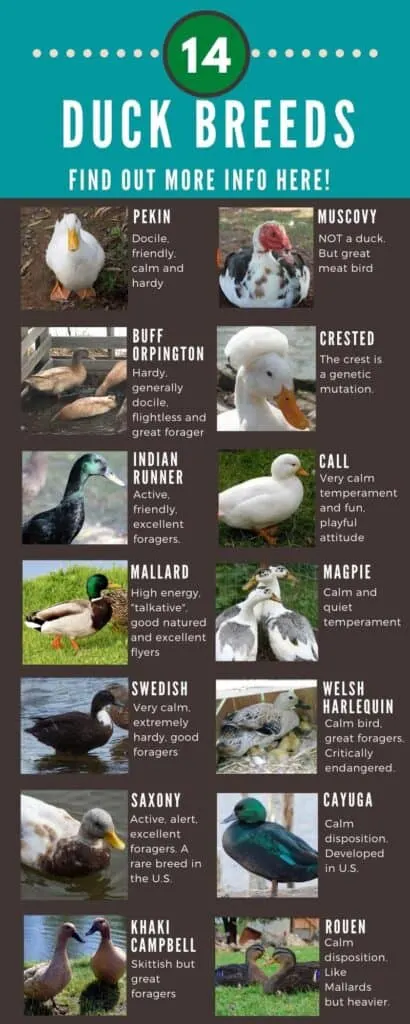
Karen
Saturday 17th of June 2023
Where can I order ducks from whom are reliable? Looking at the magpies and the town's.
Delci Plouffe
Wednesday 29th of November 2023
I try to buy as local as possible. But hatcheries are a good option. Ones like Meyer Hatchery.
Jason
Saturday 22nd of April 2023
Apart from muscovy ducks, these are all different breeds of domestic mallard, Anas platyrhynchos domesticus. The mallard you have listed is the wild-type, or Anas platyrhynchos platyrhynchos.
Lots of people have no idea there are even such things as different species of duck and that all domestic ducks (apart from muscovys) are the same species, same as a pug is the same species as a german shepherd.
I recommend changing the info of muscovy ducks to be "not a mallard" or similar instead of "not a duck." This implies wood ducks, mergansers, hardheads, teals etc aren't ducks either.
suzanne Oberempt
Tuesday 7th of December 2021
last year i collected duck eggs from our community duck pond muscovy mostly had 16 ducklings some definiatly muscovy off spring the others are a mixed bag of colors brown and even 2 yellow and grey completly different from the parents!!! what the heck happened?
Delci Plouffe
Friday 18th of March 2022
If it was an open pond, I would assume that they all bred with whatever breed was there and they were just mixed breeds. Have fun with them!
Katie
Sunday 25th of July 2021
Your picture of the Saxony duck is a call duck. The coloration is identical, so it is an easy mistake to make. Otherwise a very informative article.
Diane Kornegay
Sunday 12th of April 2020
I’m having a hard time finding some of the ducks featured in your article. The few I have found require a minimum number to order, too many for my situation. Any suggestions? Thanks so much, Diane
Patricia Kenyon
Saturday 3rd of July 2021
@Diane Kornegay, i have 2 femle and 1 male indian runner ducks.
Delci Plouffe
Monday 13th of April 2020
Good question! Is it possible to order with a group of people in your area? That way you can split the cost and the ducks but each of you get what you want? That may be an option!